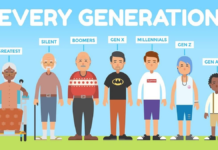By Emma Wu
What is love? There are all sorts of answers to this question; everyone has their own definition of love. Not only can this question be answered by different people, but different fields and different perspectives all have their own answers as well. The biological field studies the hormonal interactions and brain activity that occurs when one is “in love”. Love being the product of chemical reactions in the body is not the most romantic definition. It seems to overlook a lot of the mental processes, trust, and emotion that goes into it; however, understanding the biochemical basis of love can help us understand ourselves just a little bit better.
Love consists of three stages: lust, attraction, and attachment. The first phase of love is the lust or desire phase. When we first meet someone, the chemical profile is actually part of what determines attractiveness. Generally, we look for someone whose chemical or hormonal profile differs from our own. For example, people with high testosterone tend to be attracted to those with high estrogen. These hormone types differ yet complement each other. During the lust phase, people tend to release higher amounts of testosterone and estrogen to induce lust and sexual attraction. The primary objective during this phase is to have sex, rather than establish an emotional connection.
The second phase is the attraction phase. Scientists have found several hormones released during this phase, including adrenaline, dopamine, and serotonin. Adrenaline is a hormone released during the fight or flight response. It plays a role in enhancing arousal and attraction in humans. It causes the heart to beat faster and stronger, which also increases attention on one’s partner. Dopamine is known as the pleasure hormone. Once released, the hormone creates a feeling of happiness and bliss. It plays a role in motivation, addiction, attention, and desire. Finally, serotonin plays a role in mood, appetite, sleep, memory, sexual desire, and sexual function. During the attraction phase, there are often feelings of euphoria or bliss, in addition to craving for union with one’s partner. It is often termed as the “honeymoon phase” where intense attraction between people occurs for a couple months or less until it fades or moves onto the attachment phase.
The attachment phase is the final phase and the most mature form of love. During this phase, the levels of dopamine, adrenaline, and serotonin settle down and other hormones are released. Oxytocin and vasopressin are the hormones involved in long-term bonding in the attachment phase. Oxytocin, also known as the “love hormone,” is released with physical touch and correlates with dopamine to increase feelings of happiness and contentment. It is also a hormone released during hugs, hence why it is also known as the “cuddle hormone”. It is released from an area of the brain correlated with reward and pleasure, therefore improving and strengthening positive bonds. Vasopressin is another hormone released after physical touch, initiating the desire to stay with a partner and form a strong emotional attachment. The attachment phase brings a feeling of calmness and security with emotional union and attachment.
Love, biologically and chemically, is defined as hormonal interactions and brain activity occurring when intense attraction occurs between people. Of course, this is not the only perspective that one can take on love. Emotional, mental, psychological, and social aspects of love are all equally important. Everyone has different ways of viewing love, and the biological perspective is only one of these ways.










